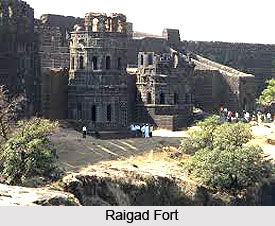 History of Alibaug covers the historical events occurred in the late middle ages that after the disintegration of Mughal Empire in India. After the death of Aurangazeb in the year 1707, the Marathas gained the power in West and Southern part of India.
History of Alibaug covers the historical events occurred in the late middle ages that after the disintegration of Mughal Empire in India. After the death of Aurangazeb in the year 1707, the Marathas gained the power in West and Southern part of India.
Alibaug, now the tourist hot spot was developed in the 17th century by Sarkhel Kanhoji Aangre the naval chief of Shivaji. Alibaug is now a coastal town and municipal council in Raigad district in Konkan region of Maharashtra.
Alibaug is the headquarters of the Raigad district. The first name of Raigad District was "Kulaba". An Israelite named Ali used to live there at that time. He was a rich man and owned many plantations of mangoes and coconuts in his gardens. Hence the locals used to call the place "Alichi Bagh", which now came to be known as "Alibagh", and the name stuck from that time.
Alibaug is located just 3 kilometres away from Alibag-Mumbai highway, where one can find this small village called "Khandale". This small hamlet has the population of around 5000 people, which is also heading Gram Panchayats. Khandale is surrounded by ancient temple of Lord Shiva or Mahadeva called Sidheshwar Temple. During "Shrawan" month the landscape beauty on these hillocks is breathtaking and on each "Shrawani Somwars" or Monday in the month of August.
In Alibaug, one can find the unique breed of onions, which are having the rich contributions in Ayurvedic medicines and very useful during summer heat which is having unique sweeter taste. Rewdanda, Chaul, Nagon, Akshi, Varsoli,Thal, Kihim and Aawas villages were known as "Ashtagare" at that time. During the regime of Maratha Empire, there were some naval battles out of which one was fought at Varsoli between Kanhoji Aangre and Siddi of Janjira in the year 1706.
In the year 1722, the armies of the British East India Company and Portuguese East India Company jointly attacked on Kulaba fort and they lost this war. At Chaul there was a battle between the armies of English East India Company and Sakhoji, the Peshwear in 1730. Sakhoji won this war and brought down the losing party along with their Captain at Kulaba. Kanhoji even issued his own currency in the form of a silver coin called the "Alibagi Rupaiya".
Alibaug and its surrounding villages are covered with the historic hinterland of Bene Israeli Jews. A Magnetic Observatory was set up in 1904 by the British Government in India in forming a global network, which is now run by Indian Institute of Geomagnetism. The observatory has two buildings. The first building has magnetometers that record changes occurring in the Geo magnetic fields. The second building has the precision recording instruments, which give data about geomagnetic storms caused by solar storms which is shared with different countries.



















